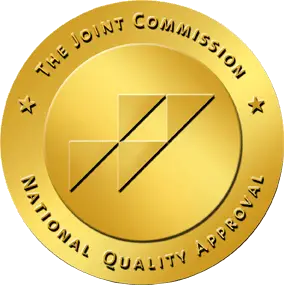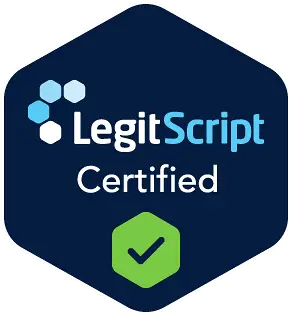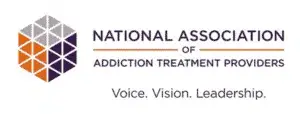Overview of Opioid Detox Centers
Opioid detox centers are specialized facilities designed to support individuals through the process of safely withdrawing from opioids and starting their recovery journey. These centers are equipped to manage both the physical and psychological challenges of opioid withdrawal, providing a structured and supportive environment for patients. They are typically accredited by organizations like the Substance Abuse and Mental Health Services Administration (SAMHSA) and the Drug Enforcement Administration (DEA), ensuring they meet high standards of care.
Services Offered at Opioid Detox Centers
Detox centers provide a range of essential services, including:
- Medical Supervision: Continuous monitoring by healthcare professionals to manage withdrawal symptoms and prevent complications.
- Medication-Assisted Treatment (MAT): Use of FDA-approved medications such as methadone, buprenorphine, and naltrexone to alleviate withdrawal symptoms and reduce cravings.
- Counseling: Access to behavioral therapies and counseling to support psychological well-being and develop coping strategies.
- Aftercare Planning: Development of a personalized plan for ongoing support and recovery after detoxification.
Types of Opioid Detox Centers
There are various types of detox centers, each catering to different needs and levels of care:
- Inpatient Medical Detox: Offers 24/7 medical supervision and is ideal for individuals with severe addiction or those at risk of significant withdrawal symptoms. This type of facility provides intensive care and constant monitoring.
- Intensive Outpatient Programs (IOPs): Provides structured therapy sessions while allowing patients to live at home and maintain daily activities. Suitable for individuals with moderate addiction who have a strong support system.
- Outpatient Detox Centers: Offers less intensive care and is appropriate for those with mild addiction. Patients attend sessions while continuing their daily routines.
SAMHSA and DEA-accredited Opioid Treatment Programs (OTPs) also offer FDA-approved medications like methadone, buprenorphine, and naltrexone to aid in recovery.
This Season, Give Yourself the Gift of a Fresh Start.
Whether you are struggling with addiction, mental health or both, our expert team is here to guide you every step of the way. Don’t wait— reach out today to take the first step toward taking control of your life.
Essential Functions of Medical Staff
Research indicates that medical staff in opioid detox centers are crucial to the detoxification process, performing several key roles:
- Initial Assessment: Evaluating the patient’s health status and substance use history to create a personalized detox plan.
- Medically Supervised Withdrawal: Monitoring withdrawal symptoms and administering medications like methadone, buprenorphine, and naltrexone to ease discomfort and prevent relapse, as described in the Medically Supervised Withdrawal (Detoxification) from Opioids course.
- Post-Detoxification Support: Providing ongoing therapy and aftercare to support long-term recovery and manage opioid use disorder (OUD) as a chronic condition.
Choosing the Right Detox Center
Selecting the appropriate detox center is essential and should be based on factors such as:
- Addiction Severity: Determining the level of care needed based on the severity of the addiction.
- Personal Circumstances: Considering factors like home environment and support systems.
Consulting with a healthcare provider can help determine the most suitable type of detox center, ensuring that the chosen facility meets the individual’s specific needs for effective recovery.
Overall, opioid detox centers play a vital role in managing withdrawal and setting the stage for long-term recovery. The integration of medical supervision, medication-assisted treatment, counseling, and ongoing support is crucial for a successful detoxification and recovery process.
The Opioid Detoxification Process
Opioid detoxification is a crucial initial step in the recovery journey for those struggling with opioid addiction. This medically supervised process involves safely clearing opioids from the body while managing withdrawal symptoms, which can range from mild to severe based on the level of dependency and the type of opioid used. Detox typically combines medication-assisted treatment (MAT) and psychological support to address both physical and mental health aspects.
The Detoxification Process
The opioid detoxification process includes:
- Medically Supervised Withdrawal: A controlled environment where healthcare professionals manage withdrawal symptoms using medications like methadone or buprenorphine. These medications help reduce cravings and withdrawal effects, with dosages carefully tapered to minimize the risk of further dependency.
- Psychological Support: Counseling and therapy address cravings and mental health concerns, helping patients cope with psychological dependence and prepare for long-term recovery.
Duration and Factors Affecting Detox
Detoxification generally lasts from several days to a week, with withdrawal symptoms peaking in the first few days. The duration and intensity of detox are influenced by:
- Duration of Opioid Use: Longer use often leads to more severe withdrawal symptoms.
- Type of Opioid: Different opioids have varying withdrawal timelines.
- Individual Health Profile: Personal health conditions can affect the detox process.
Post-Detoxification Support
After detoxification, ongoing support is essential for preventing relapse and promoting sustained recovery. Post-detox support often includes:
- Aftercare Programs: Engagement in 12-step groups or sober living homes to reinforce sobriety and provide ongoing support.
- Continued Therapy: Cognitive-behavioral therapy (CBT), motivational enhancement, and other therapeutic modalities tailored to individual needs.
Initial Assessment and Intake
The initial assessment and intake process is a critical step in the detoxification journey. This phase involves:
- Gathering Comprehensive History: Collecting information on mental health, medical history, family background, and lifestyle habits to understand the patient’s condition fully.
- Forming a Therapeutic Relationship: Building trust and rapport between the patient and medical staff to ensure a successful detox experience.
- Developing a Treatment Plan: Creating a personalized detox plan based on the assessment to address specific needs.
- Handling Documentation: Managing insurance and legal requirements for a smooth transition into detox treatment.
Clinicians may use tools such as the Clinical Opiate Withdrawal Scale (COWS) to assess withdrawal severity and guide treatment decisions.
Medically Supervised Opioid Withdrawal
Medically supervised withdrawal, or detoxification, involves:
- Medication Administration: Using medications to alleviate severe withdrawal symptoms like cravings, anxiety, and gastrointestinal distress. A study in The New England Journal of Medicine emphasizes that medically supervised withdrawal can improve patients’ health and increase their engagement in rehabilitation programs.
- Transition to Long-Term Treatment: Ensuring that detoxification is a bridge to evidence-based treatments such as MAT to reduce relapse risk. Studies and CMAJ guidelines emphasize that detox alone is not sufficient for long-term recovery without subsequent treatment. The Federal Bureau of Prisons’ guidance suggests that a safe withdrawal plan often includes substituting a long-acting, cross-tolerant substance that is then tapered according to a specific schedule.
Post-Detoxification and Continued Recovery
Post-detoxification support is crucial for bridging the gap between detox and long-term sobriety. Key elements include:
- Therapy and Counseling: Ongoing sessions to address addiction and co-occurring mental health issues.
- Building a Support System: Developing a network of support to manage triggers and maintain sobriety.
- Managing Post-Acute Withdrawal Syndrome (PAWS): Addressing symptoms like mood swings and anxiety with appropriate support.
During their stay, patients not only detoxify but also learn about substance use disorders, the negative impact of addiction, and strategies for lifestyle changes to prevent relapse, as noted by resources from the Provider’s Clinical Support System. By focusing on comprehensive detoxification and post-detox support, individuals can better navigate the recovery process and achieve lasting sobriety.
Challenges and Successes of Opioid Detox
Opioid detoxification is a crucial step in overcoming addiction, yet it presents both significant challenges and opportunities for success. Addressing opioid use disorder (OUD) requires a comprehensive approach, which includes evaluating the impact of policies, care systems, and stigma. Research indicates continuous innovation in treatment methods is essential to improve effectiveness and expand access, particularly as new substance use challenges emerge.
Challenges
Despite its importance, opioid detoxification faces several challenges:
- Access to Care: Disparities in opioid treatment programs (OTPs) and varying state regulations can limit access to quality care. Some areas face stringent treatment requirements or lack OTPs entirely, hindering access to necessary services.
- Treatment Gaps: According to the Pew Trusts, only a fraction of those needing treatment receive it. Improving the distribution of OTPs and addressing regulatory barriers could enhance access to care.
- Medication Accessibility: While medications like methadone and buprenorphine are effective in reducing opioid use and associated risks, their availability and proper use are crucial. Ensuring that these treatments are accessible and effectively administered is vital for success.
Successes
Successful detoxification and recovery are supported by several factors:
- Medication-Assisted Treatment (MAT): Incorporating MAT into recovery plans significantly increases success rates by normalizing brain chemistry, alleviating cravings, and preventing withdrawal symptoms. The CDC highlights that MAT is a key component in improving recovery outcomes.
- Effective Medications: Medications like methadone and buprenorphine have proven effective in reducing opioid use, lowering the risk of infectious disease transmission, and improving treatment retention. Studies show that patients on methadone are more likely to remain in treatment compared to those without medication.
- Supportive Care: Alongside medication, supportive care and counseling play a crucial role in detoxification. These elements help address psychological dependence and prepare patients for long-term recovery.
Risks and Complications
Opioid detoxification, while necessary, comes with potential risks and complications:
- Severe Withdrawal Symptoms: These can include intense cravings, agitation, severe anxiety, muscle aches, sweating, abdominal cramping, diarrhea, and rapid heart rate. In some cases, dehydration from vomiting and diarrhea may require medical intervention.
- Emotional and Psychological Impact: Detox can lead to mood swings, depression, and even suicidal thoughts. Managing these psychological effects is crucial during the detox process.
- Risk of Relapse: As opioid tolerance decreases, the risk of overdose increases if a person uses the same amount of opioids as before detox. Medical supervision is essential to manage these risks and support recovery.
The Success Rates
Success rates of opioid detox centers can be difficult to measure due to the individualized nature of recovery. Key points include:
- Long-Term Recovery: According to a study, approximately 1.2 million American adults have reported resolving an opioid problem, indicating that long-term recovery is achievable. However, relapses are common, with an estimated rate of 40-60%, similar to other chronic diseases.
- Effectiveness of MAT: Medication-assisted treatment (MAT) has significantly improved outcomes for patients with OUD, as evidenced by a Pew Trusts report. Despite its effectiveness, there is a persistent treatment gap due to funding issues and a shortage of qualified providers.
In conclusion, navigating opioid detox involves addressing a range of challenges while leveraging the successes of comprehensive treatment approaches. The integration of medication-assisted treatment, supportive care, and personalized support is key to improving recovery outcomes and achieving lasting sobriety.
Guidelines for Selecting an Opioid Detox Center in Colorado
Choosing the right opioid detox center is crucial for a successful recovery. To ensure the facility meets your needs and supports your journey to sobriety, consider the following factors:
Key Considerations
- Severity of Addiction:
- Evaluate whether the center specializes in treating the severity of your addiction. Facilities vary in their capacity to handle different levels of dependency.
- Treatment Programs Offered:
- Look for centers that offer a comprehensive approach, including medically supervised withdrawal and a range of treatment options. Programs should include medication-assisted treatment (MAT) options such as methadone or buprenorphine if needed.
- Qualifications of Medical Staff:
- Ensure the center’s medical staff are qualified and experienced in managing opioid detox. Their expertise is crucial for effective treatment and safe management of withdrawal symptoms.
- Accreditation:
- Verify that the center is accredited by reputable organizations like the Joint Commission or the Commission on Accreditation of Rehabilitation Facilities. Accreditation is a strong indicator of a facility’s quality and adherence to industry standards.
- Personalized Care:
- Seek centers that offer personalized treatment plans tailored to individual needs. This includes the availability of MAT and other supportive therapies.
- Success Rates and Post-Treatment Support:
- Inquire about the center’s success rates and the availability of post-detox support. Ongoing care, such as aftercare programs and counseling, is vital for maintaining long-term sobriety.
Practical Considerations
- Location:
- Decide whether you prefer a detox center close to home or if specialized treatment options outweigh proximity. Location can impact your comfort and accessibility to support systems.
- Cost and Insurance Coverage:
- Consider the cost of treatment and verify insurance benefits. Discuss potential out-of-pocket expenses and explore payment options to ensure the financial aspect of treatment aligns with your budget.
- Insurance and Payment Options:
- Check if the center accepts your insurance and understand the coverage details. Explore payment options and financial assistance if necessary.
Selecting the right opioid detox center involves assessing both medical and practical factors. A well-chosen center should provide a comprehensive, personalized treatment plan, ensuring both immediate detox needs and long-term recovery goals are met. By evaluating accreditation, treatment options, staff qualifications, and practical considerations like location and cost, you can make an informed decision that supports a successful recovery journey.
The Recovery Village Palmer Lake Is Here to Help
There are quite a few different options for people who are seeking treatment for drug & alcohol addiction. Your individualized treatment plan at The Recovery Village Palmer Lake may include:
- Medical detox: Patients detox from substances in a clinical environment where doctors monitor health and provide medications to ease withdrawal symptoms.
- Inpatient treatment: Patients in inpatient treatment live at our facility and attend a full schedule of individual and group therapy, counseling and peer support sessions.
- Partial hospitalization program (PHP): PHPs provide patients with additional flexibility and independence than inpatient programs.
- Intensive outpatient program (IOP): IOPs help patients transition to life outside of rehab, with fewer hours of care and more time building skills and habits for recovery.
- Outpatient treatment: Outpatient care provides ongoing treatment after an inpatient stay and supports clients as they transition back into their daily lives.
- Aftercare: Aftercare programs help support long-term recovery through clinical and medical recommendations for follow-up care, relapse prevention plans and more.
If you or someone you love is struggling with drug or alcohol addiction, help is available. The Recovery Village Palmer Lake is here to support you throughout the entire recovery process. It’s time to get your life back. Call our Recovery Advocates today.








